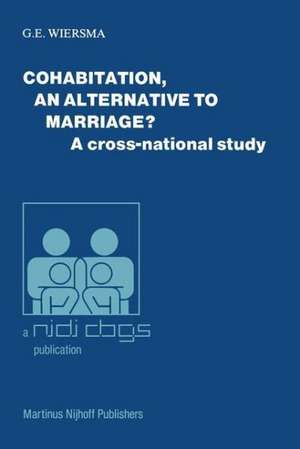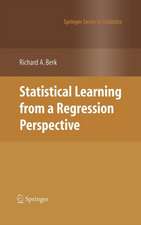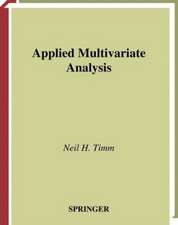Cohabitation, an alternative to marriage?: A cross-national study: Publications of the Netherlands Interuniversity Demographic Institute (NIDI) and the Population and Family Study Centre (CBGS), cartea 9
Autor G.E. Wiersmaen Limba Engleză Paperback – 9 oct 2011
Preț: 383.71 lei
Nou
Puncte Express: 576
Preț estimativ în valută:
73.43€ • 76.23$ • 61.23£
73.43€ • 76.23$ • 61.23£
Carte tipărită la comandă
Livrare economică 22 martie-05 aprilie
Preluare comenzi: 021 569.72.76
Specificații
ISBN-13: 9789400968745
ISBN-10: 9400968744
Pagini: 220
Ilustrații: XIII, 203 p.
Dimensiuni: 160 x 240 x 12 mm
Greutate: 0.31 kg
Ediția:Softcover reprint of the original 1st ed. 1983
Editura: SPRINGER NETHERLANDS
Colecția Springer
Seria Publications of the Netherlands Interuniversity Demographic Institute (NIDI) and the Population and Family Study Centre (CBGS)
Locul publicării:Dordrecht, Netherlands
ISBN-10: 9400968744
Pagini: 220
Ilustrații: XIII, 203 p.
Dimensiuni: 160 x 240 x 12 mm
Greutate: 0.31 kg
Ediția:Softcover reprint of the original 1st ed. 1983
Editura: SPRINGER NETHERLANDS
Colecția Springer
Seria Publications of the Netherlands Interuniversity Demographic Institute (NIDI) and the Population and Family Study Centre (CBGS)
Locul publicării:Dordrecht, Netherlands
Public țintă
ResearchCuprins
1. Introduction.- 1. Background.- 2. Summary of the study design.- 2. Major Theme of the Study: Degree of Individuation.- 3. Statement of the Problem, Theoretical Framework Hypotheses, and Research Methodology.- 1. Statement of the problem.- 2. Theoretical framework, hypotheses and concepts.- 3. Research design.- 4. Sampling and data-collection procedures.- 5. Questionnaire development and scale-construction.- 4. Cohabitation: A Comparative Descriptive Analysis with Marriage in the Netherlands and in the United States — A Test of Hypotheses.- 1. Introduction.- 2. The U.S. and Dutch sampling communities: a comparison.- 3. Some social-economic characteristics of cohabitants in comparison with marrieds.- 4. Some dyadic relationship characteristics of cohabitants in comparison with marrieds.- 5. Dyadic commitment of cohabitants in comparison with marrieds.- 6. The attitudes of cohabitants and marrieds towards marriage.- 7. Balance of power between cohabiting and married partners.- 8. Degree of individuation of cohabitants in comparison with marrieds.- 9. Summary.- 5. An Exploratory Analysis of the Differences in Degree of Individuation between Cohabiting and Matching Married Couples.- 1. Explanation of the analytical method.- 2. Discussion of the variables that influence “Individuation Difference”.- 3. Ranking of the predictors of “Individuation Differences”.- 4. Conclusion.- 6. Reflections.- References.- Appendix A.- Appendix B.- Appendix C.




















